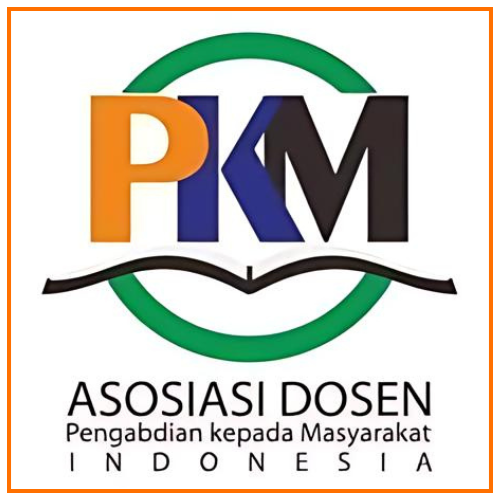To Say or Not To Say: ESL Learners' Perspective towards Pronunciation Instruction
Abstract
This paper addresses the perspective of ESL learners towards pronunciation instruction. It sought to discover how these learners view their speech classes in terms of course design, the language of instruction, preferred learning and teaching style, and their preferred type of feedback. This study utilized a quantitative-qualitative approach to the problem. The respondents were Education students majoring in English who answered a survey questionnaire and underwent an interview. The data from the survey were tabulated using frequency count and the data from the interview were then categorized, transcribed and analysed. Results showed that ESL learners are informed with their course design and they are open to providing suggestions on how the course could be improved. They favour English as the main mode of instruction, with code-switching as a welcome technique in the classroom. They are attuned to their learning style, mixing several styles. They prefer to be taught theory before practice and favour immediate corrective feedback.
Keywords: Course design; ESL; feedback; learner perspective; learning and teaching style; pronunciation instruction.
Full Text:
PDFReferences
Alghazo, Sharif. (2015). Advanced EFL Learners' Beliefs about Pronunciation Teaching. International Education Studies, 8, 63-76. 10.5539/ies. v8n11p63.
Adita, A.K., Bindarti,W.E., Wahyungsi,E.(2014). The Use of Reading Aloud Technique to Improve the VIII-A Grade Students' Pronunciation Achievement in Reading Narrative Texts at SMPN 1 Situbondo. Artikel Ilmiah Mahasiswa, 1: 1-9.
Asher, J. (2012). Learning Another Language through Actions (7th ed.). CA, USA: Sky Oaks Productions.
Baker, A. A., & Murphy, J. M. (2011). A Knowledge Base of Pronunciation Teaching: Staking out the Territory. TESL Canada, 28(2), 29-50.
Beisbier, B. (1995). Sounds Great: Intermediate Pronunciation and Speaking. Boston, MA: Heinle and Heinle.
Burns, A. (2006). Integrating Research and Professional Development on Pronunciation Teaching in a National adult ESL Program. TESL Reporter, 39, 34-41.
Buss, L. (2013). Pronunciation from the Perspective of Pre-Service EFL Teachers: An analysis of Internship Reports. In J. Levis & K. LeVelle (Eds.). Proceedings of the 4th Pronunciation in Second Language Learning and Teaching Conference, Aug. 2012. (pp. 255-264). Ames, IA: Iowa State University.
Celce-Murcia, M. (ed.) (1991). Teaching English as a Second or Foreign Language (2nd ed.). Boston, Massachusetts: Heinle & Heinle Publishers.
Celce-Murcia, M., Brinton, D., Goodwin, J., & Griner, B. (2010). Teaching Pronunciation: A Course Book and Reference Guide (2nd ed.). Cambridge, UK: Cambridge University Press.
Celce-Murcia, M., Brinton, D., Goodwin, J. (1996). Teaching Pronunciation: A Reference for Teachers of English to Speakers of other Languages. Cambridge, UK: Cambridge University Press.
Couper, G. (2003). The Value of an Explicit Pronunciation Syllabus in ESOL Teaching. Prospect, 18, 53-70.
Couper, G. (2006). The Short- and Long-term Effects of Pronunciation Instruction. Prospect, 21, 46-66.
Deng, J., Holtby, A., Howden-Weaver, L., Nessim, L., Nicholas, B., Nickle, K., Pannekoek, C.,
Stephan, S., & Sun, M. (2009). English Pronunciation Research: The Neglected Orphan of Second Language Acquisition Studies? (WP 05 09). Edmonton, AB: Prairie Metropolis Centre.
Derwing, T.M., Munro, M.J., & Wiebe, G.E. (1997). Pronunciation Instruction for Fossilized Learners: Can it help? Applied Language Learning, 8,217-35.
Derwing, T.M., Munro, M.J., & Wiebe, G.E. (1998). Evidence in Favour of a Broad Framework for Pronunciation Instruction. Language Learning, 48, 393-410.
Derwing, T. M. (2010). Utopian Goals for Pronunciation Teaching. In J. Levis & K. LeVelle (Eds.), Proceedings of the 1st Pronunciation in Second Language Learning and Teaching Conference, Iowa State University, Sept. 2009. (pp. 24-37), Ames, IA: Iowa State University.
Field, J. (2005). Intelligibility and the Listener: the Role of Lexical Stress. TESOL Quarterly, 39, 399-423. http://dx.doi.org/10.2307/3588487
Fleming, N. D. and Mills, C. E. (1992). Not Another Inventory, Rather a Catalyst for Reflection. To Improve the Academy, Vol. 11, p. 137.
Foote, J. A., Holtby A. K., & Derwing, T. M. (2011). Survey of the Teaching of Pronunciation in Adult ESL Programs in Canada, 2010. TESL Canada Journal, 29(1), 1-22.
Foote, J.A., Trofimovich, P., Collins,L & Urzua, F. S. (2013). Pronunciation Teaching Practices in Communicative Second Language Classes. The Language Learning Journal Volume 44, 2016 - Issue 2. http://dx.doi.org/ 10.1080/ 09571736. 2013. 784345.
Fraser, H. 2000. Coordinating Improvements in Pronunciation Teaching for Adult Learners of English as a Second Language. Canberra: DETYA (ANTA Innovative Project).
Fraser, H. (2001). Teaching Pronunciation: A Handbook for Teachers and Trainers. Sydney, Australia: TAFE NSW Access Division. Available: http://catalogue. nla.gov.au/Record/565346.
Gabrielatos, C. 2002. Reading Loud and Clear: Reading Aloud in ELT. Available at http://www.gabrielatos.com/ReadingAloud,html.
Gilbert, J. B. (2008). Teaching Pronunciation using the Prosody Pyramid. New York: Cambridge University Press.
Han, J. (1996). The Effects of Pronunciation-Based Listening Practice on Korean EFL Students. Ehwa Womans' University.
Hahn, L. (2004). Primary Stress and Intelligibility: Research to Motivate the Teaching of Suprasegmentals. TESOL Quarterly, 38, 201-223.
Hewings, M., & Goldstein, S. (1998). Pronunciation Plus: Practice through Interaction. Cambridge, UK: Cambridge University Press.
Kennedy, S. (2008). Second Language Learner Speech and Intelligibility: Instruction and Environment in a University Setting (Unpublished doctoral dissertation). Montreal, Canada: McGill University.
Krashen,S. and Terell, T. (1988). The Natural Approach Method: Language Acquisition in the Classroom. Pennsylvania USA: Phoenix ELT.
Lintunen, P. (2004). Pronunciation and Phonemic Transcription: A Study of Advanced Finnish Learners of English. Turku: University of Turku.
Macdonald, D., Yule, G., & Powers, M. (1994). Attempts to Improve L2 Pronunciation: The Variable Effects of Different Types of Instruction. Language Learning, 44, 75-100.
Morley, J. (Ed.). (1994). Pronunciation Pedagogy and Theory: New Views, New Dimensions. Alexandria, VA: TESOL.
Munro, M.J., & Derwing, T.M. (2006). The Functional Load Principle in ESL Pronunciation Instruction: An Exploratory Study. System, 34, 520-531.
Myers, I. B., & Myers, P. B. (1980). Gifts Differing: Understanding Personality Type. Palo Alto, CA: Consulting Psychologists Press.
Pawlak, M., Mystkowska-Wiertelak, A., & Bielak, J. (2015). Exploring advanced learners' beliefs about pronunciation instruction and their relationship with attainment. In E. Waniek-Klimczak & M. Pawlak (Eds.), Teaching and Researching the Pronunciation of English (pp. 3-22). Switzerland: Springer International Publishing. http://dx.doi.org/10.1007/978-3-319-11092-9_1.
Tergujeff, E. (2013). Learner perspective on English pronunciation teaching in an EFL context. Research in Language, Vol. 11.1. University of Jyväskylä. HTTP:// dx.doi.org/10.2478/v10015-012-0010-z.
Tikkakoski, S. (2015). Communicative language teaching as English pronunciation teaching method: Developing exercises (Unpublished bachelors thesis). English Philology Faculty of the Humanities University of Oulu.
Walker, R. (2010). Teaching the Pronunciation of English as a Lingua Franca. Oxford Handbooks for Language Teachers. Oxford: Oxford University Press.
Wells, J.C. (1996). Why Phonetic Transcription is Important. Malsori 31-2, 239-242.
Zielinski, B. (2006). The intelligibility cocktail: An interaction between speaker and listener ingredients. Prospect, 21, 22-45.
DOI: https://doi.org/10.37058/jelita.v1i1.4308
Refbacks
- There are currently no refbacks.








Journal of Education, Language Innovation, and Applied Linguistics
Lembaga Penelitian, Pengabdian Kepada Masyarakat dan Penjaminan Mutu Pendidikan (LP2M-PMP) Universitas Siliwangi
Jalan Siliwangi Number 24, Kota Tasikmalaya - 46115
West Java, Indonesia










